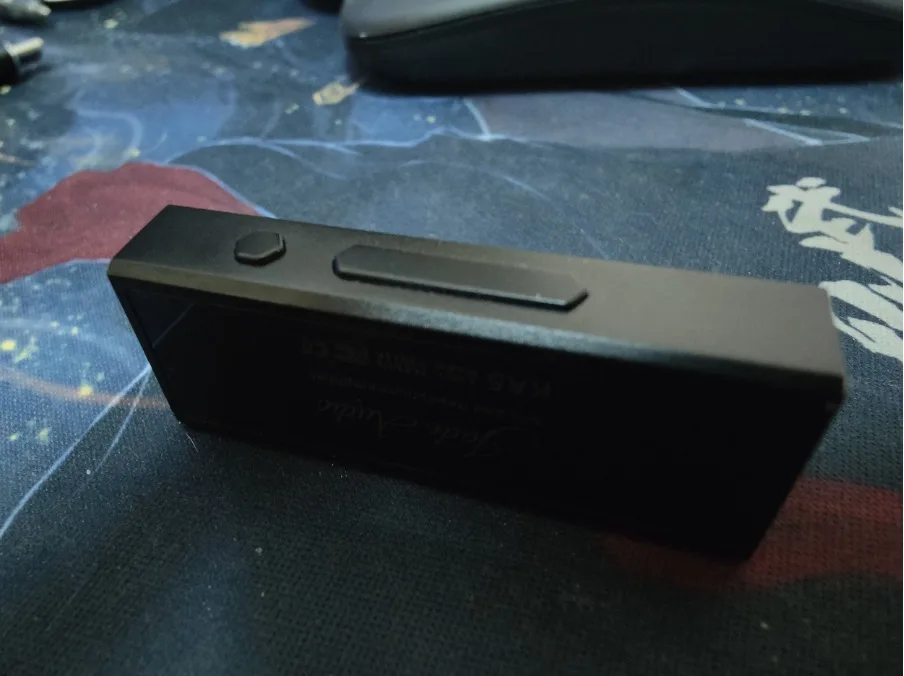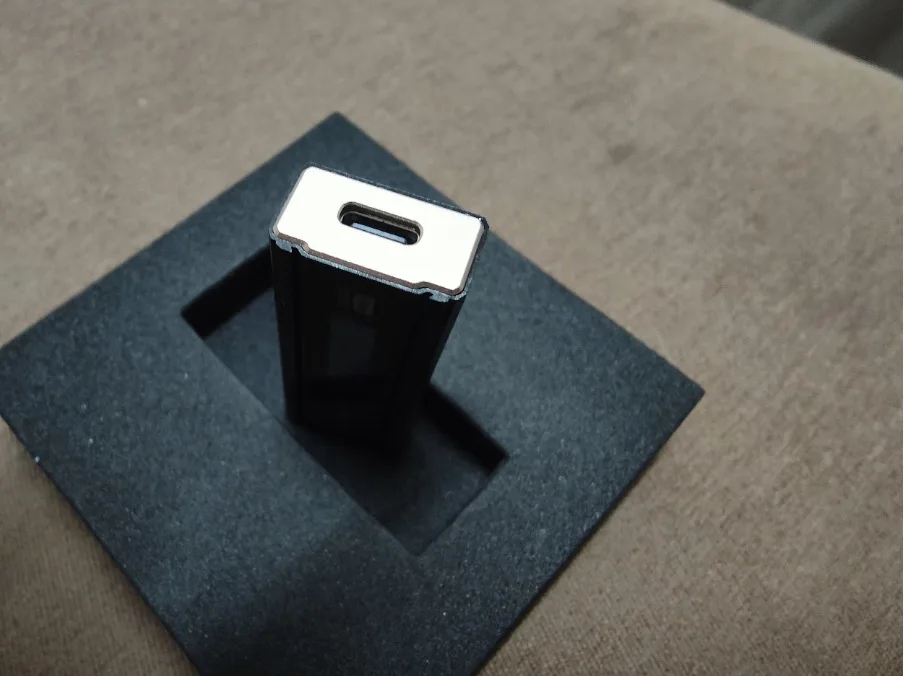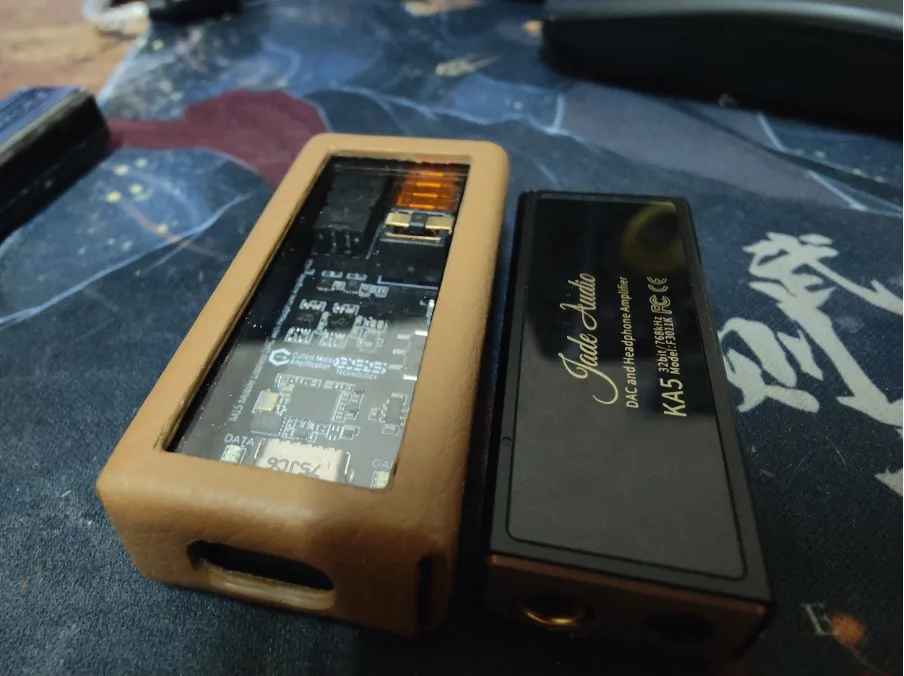Introduction
FiiO is currently planning to expand their Jade Audio line with their double releases of the Q11 that we have just covered, which is a highly recommended item for their value, and the one we are covering today, the flagship dongle KA5. They are packed with high end specifications also with all the perks of a flagship dongle that enable users to fiddle with their settings through the FiiO app or straight on the device with ease with the OLED screen, all at a rather good price that is way below what the competitors are currently offering. How will they sound is surely the big question here and we shall find out in this review.
But first let me give a shout out to our usual partner in crime, Red Ape Headphones Store for providing this unit for this review. They are the official reseller for FiiO here in Malaysia, so do check them out.
Functions & Specifications
Before we start the review, here are the specifications of the FiiO & Jade Audio Q11;
- Model: FiiO KA5 USB digital DAC
- Chipset: 2 x Cirrus-Logic CS43198 with independent dual op amps
- Compatibility: PCM up to 32bit/768kHz – DSD up to DSD256 (according to FiiO)
- SNR: 124dB (32 ohms) / 126dB (300 ohms)
- Output voltage: 2V (single-ended) / 4V (balanced)
- Output power : 122mW @ 32 ohms (single-ended) / 265mW @ 32 ohms (balanced)
- THD: < 0.00037%
- Output impedance: < 0.35dB
- Size: 56.3mm x 22mm x 12mm (cable included)
- Weight: 19g
- Socket: USB-C
Retail Price & Where to Get
Thank you, RED APE and Fiio for providing us the unit for review and testing. The FiiO & Jade Audio KA5 is officially priced at RM559.00 and can be found at RED APE (official distributor).
Purchase Link :
Shopee : https://invl.io/clihd0l
Lazada : https://invol.co/clihd0s
Packaging & Accessories
FiiO & Jade Audio has a decision which I feel is a good choice to simplify their packaging to lower the cost while focusing on the product itself. The package of the KA5 is simple and straight to the point with all the necessities included but sadly, no casing of any sorts is included. Inside we will find a USB C to C cable, a lightning to USB C cable, a USB A to C converter, some paperworks and the KA5 itself.
Design
The design of the KA5 has the DNA of FiiO KA series with a similar size of the KA3 but ever so slightly wider. They have a good, sleek design with a mix of anodized aluminium, plastic for the screen along with gold colour metal top that is quite premium looking.
On the output side we will have 2 types of output which includes a single ended 3.5mm that doubles as a SPDIF output and a 4.4mm balanced output.

The KA5 has a multifunction button on the side and a volume rocker situated below it and they have FiiO’s usual hexagon design to them. To access the settings, users have to click the multifunction button twice and use the volume rocker to adjust the adjacent settings. Pretty simple and straightforward.

Inside the KA5, 2 pieces of the formidable CS43198 DAC chip from Cirrus Logic that has an incredibly dynamic sound and are usually found in high end dongles cost way more than the KA5. They have native DSD support and a maximum of 32/768khz in PCM mode with no MQA support currently but this might change in the future via firmware upgrades. They are driven by 2 independent op amps in mono mode providing a true balanced output that brings better crosstalk and more driving power. On the bottom of the unit we will find a standard USB type C that is for digital input via smartphones or PC.

The KA5 has a power management chipset inside that will reduce power consumption but bear in mind that they do draw some power from your source and will cause some minor battery drain. They are not as consuming as the Hidizs S9Pro but they are slightly hungrier than the Questyle M15 and similar to the FiiO KA3. Also worth noting that the KA5 will run warm after circa 15 minutes of playtime which is worrying, but it will never get hot from my usage.
The KA5 also has support from the FiiO control application and along with the OLED screen, users can play with their vast settings which includes;
- Gain settings : High or Low
- Filters
- Volume control mode : a)120 step b)60 steps9
- DAC work mode : Class AB(higher impedance output) or Class H(lower impedance output)
- SPDIF switch
- Left right volume adjustment
- Headphone depop (hardware mute switch incase of any popping sound occur)
- OLED brightness dimmer : 1-10
- Display rotate
- Screen run time : 1-60 second or never off
- HID key settings for volume button increment type: A) Single key click 2) Hold to adjust
- Firmware version information
- Reset to default

Gears Used for Comparisons
FiiO M17
Hidizs S9 Pro
FiiO KA3
Questyle M15
FiiO Q11
Rudistor RP8
Sennheiser HD800s
Ikko OH1
Moondrop A8
Dunu EST112
Blur daBass custom earbud
Moondrop Chocanne
Songs list
Tone and Presentation
The tone of the KA5 is a slightly thick, neutral based dongle that has a mild brightness to it and they have a transparent type of signature that possesses great clarity across the whole spectrum. It has a wide sound that provides great extension in the bass and highs region. It is quite musically inclined with a mild clinical sound that also has a fun signature to them making the KA5 a very versatile dongle.
Soundstage
The soundstage of the KA5 is quite impressive for their size as a dongle and in their price range as well. It possesses a great depth and width along with a rather tall soundscape that makes music sound airy and spacious. Though being good at soundstage, they have a medium sized headroom but in return, they sounded intimate and have a focused signature that have an enveloping sound.
Separation and Timbre
Separation of the KA5 is excellent as they are able to have a great left to right separation with almost 0 crosstalk especially on their 4.4mm output. Music is presented with great texture and layers making music sound clean without any fuzziness. Timbre that the KA5 produce is a natural type of timbre that is somewhere between being light to intense with a mild sharpness in their mid to high range.
Drivability
The driving power of the KA5 is another part where they truly excel at. They are able to produce a powerful output that can satisfy most of the IEM out there and some full-sized headphones which is impressive given their size. In terms of driving power which is rated at 122 mw @32ohms on 3.5mm and 265 mw @32ohms on 4.4mm might sound average but the spec sheet in my opinion doesn’t mean much as I do my test by ear and I must say they are sufficient for my 300 ohms HD800s in terms of volume on high gain, AB mode.
The Bass (Low)
Bass that the KA5 brings to the table is a neutral bass that is deep, powerful and clean that has a mild lift in their mid bass region. Their clarity here is great and they have all the details intact without any bleed present to the other frequencies. Their bass impact is punchy and tight but they do not add quantity in their bass which doesn’t suit bassheads out there, instead they will cater best for those who want a tighter, cleaner bass response. Sub-bass extension is mediocre and their rumble mostly stayed the same without any major differences. They do provide some air in their bass texture which will give a more pleasant layering to the music played. Overall, their bass performance is actually quite good where they do clean up the bass and provide a tighter, better textured bass that will not alter the naturalness of the music played.
The Mids
The midrange of the KA5 is a slightly forward mids that has a mild lean towards their upper midrange, thus providing a brighter sound signature with a slight aggressiveness. They have some thickness in their mids that gives music a little more body. Details are amazing here in both macro and micro details along with a decent resolution as well as superb transparency typical of a Cirrus Logic chipset. There is some slight colouring that does not interfere with the purity of music played while providing a fun touch in the midrange here which is a recent theme of FiiO’s current tuning. Vocals and instruments sounded intimate and they have an elastic width along with great placements making music very enjoyable in a wide range of genres. Overall, I do find their midrange pleasant as they are clear with great transparency along with a fun tuning without altering their natural state and they work well for a wide range of genres but they might sound a little hot on the upper midrange.
The Highs
The high frequency on the KA5 is a neutral type of highs that has great energy that is slightly strong but it does not sound peaky or harsh, instead we get a good extended high range that is fun to listen to. It is slightly bright in their presentation, making music sounds a little more lively and clear. In terms of details and clarity, the KA5 surely does deliver as they are packed with details here along with great clarity. Pairing is important here as bright sounding gears might have some fatigue in louder volume but to my ears, they are not peaky or harsh and they do satisfy my craving for a huge amount of treble. Treble is slightly on the intense side of the spectrum giving music a little more energy in the high range with great sparkle along with a mild crisp sound. Overall, I do find the high range quite exciting as they have a great quality along with a great amount but some treble sensitive or bright gears pairing might find the high range slightly strong.
Comparisons
VS FiiO Q11
The FiiO Q11 is the latest offering released alongside the KA5 in collaboration with Jade Audio and they are indeed one of the best price versus performance products I have ever experienced. They are equipped with a single CS43198 chipset instead of 2 chipset on the KA5 and the Q11 is battery powered.
The High region has a more laid-back style of presentation with a more relaxed treble. Details and clarity here is edged out by the KA5 as they are more refined while being stronger.
Midrange on the Q11 sounded thicker with a slightly better resolving sound. Details on both are similar but clarity on the KA5 is better due to their brighter signature. Resolution on the Q11 is a tad bit better and they are more intimate while the KA5 midrange has a more wide, spacious approach.
Bass on both of these units are similar in terms of quantity and their presentation as both have a solid bass response that have a minor bass lift but the KA5 bass does sound slightly tighter and clearer with better details along with a more refined slam to them. Sub-bass extension is better on the Q11 but in a very minor way.
Soundstage on the KA5 is wider and taller with a better depth perception versus the rather intimate feel on the Q11.
In terms of driving power, the Q11 does have better driving power and a louder volume, capable of driving most gears out there but the KA5 is not far behind.
VS Questyle M15
The M15 is a product that surely has a place in my heart for their amazing performance that rivals some full fledged DAP. There is a Sabre based chipset on the M15 instead of the dual CS43198 chipset on the KA5 and the KA5 is almost half the cost of the M15 and the KA5 have a more choice of sound personalization through their settings.
Bass on is more neutral and balanced with slightly more details and clarity. KA5 bass have a tighter, stronger slam to them and have more energy. Texture on the bass of the M15 is better with a deeper sub bass extension.
The M15 midrange has a more resolving sound with better details intact especially in their micro details and they are more resolving. The KA5 mids have a slightly better placement and they sounded thicker.
High range on the Sabre has a more pronounced feel to it and they sounded clearer and cleaner while the KA5 has a more energetic high range. Treble on both is intense but the M15 sounded more natural and balanced.
Soundstage on the M15 is wider and taller by a small margin. In driving power, both are very similar in their driving power as both are capable of driving big cans with ease but the power management of the M15 is way better as they consume much lower power from the source.

Synergy
Sennheiser HD800S
The now legendary flagship open back headphones from the German producers, Sennheiser. They are well balanced headphones with an enormous soundstage that is a staple in the high end headphones segment. They are notoriously hard to drive and a good pairing is needed to be performing at their best. The high gain with 4.4mm boost is required for this pairing and they are adequate but barely.
Bass is good and they possess a good tight slam but they are quite lacking in their texture and might sound a little thin at times. Sub-bass is decent enough but they do lack dynamics.
Midrange has a clean and clear presentation along with decent clarity and details. Mid-range sounded brighter especially on the higher midrange and they might sound a little peaky on certain genres. Resolution wise is mediocre but acceptable.
Highs here are a little harsh with good energy provided. They are not piercing highs but they do lack some refinement and they are somewhat suppressed.
Soundstage is good but it does not extend their width and airiness and everything sounded accurate.
In terms of driving power, they barely make it in terms of volume and driving synergy but given their size and price, they are actually quite acceptable but do not show the HD800S true potential.
Dunu EST112
The tribrid IEM from Dunu TopSound that houses 2 electrostatic drivers, 1 dynamic driver and 1 balanced armature that have a true to sound tone along with a respectable sound performance. They are a neutral sounding IEM that matches the KA5 well.
Bass has great impact with a tighter slam. Details and clarity is added and they sounded much more textured. Sub-bass amount remains mostly the same.
Midrange here has a slightly more forward and thicker overall with better transparency and resolution. Vocals sounded lusher and possessed better placements overall.
Highs are smooth and extend pretty well with a good sparkle and crispness. Details and clarity is also quite good here with added air. Treble sounded more natural with some added intensity.
Soundstage is great with height and width added for a more spacious presentation.
Who Is It For?
The KA5 is an easy recommendation for those who want an ultra portable device that has top notch performance along with all the personalization in your fingertips due to their tuning options. They are great for those who want a natural sounding device that will provide a clean and clear sound with minimal colouration along with a wide soundstage. They are not for bass lovers out there as they are not providing a massive bass lift and they are not for those who are searching for ultimate extreme details, instead they are more catered towards a fun, easy going sound that is natural and accurate.
Final words
Well, FiiO & Jade Audio have done it again in providing another superb product that is priced way lower than the competitors of similar products with a sound that might go toe to toe with them. Being highly configurable, they are indeed a swiss army knife and they provide users with all the options to satisfy their needs. They have a respectable driving power for their size along with a clean, spacious sound that does not hold back on their design and build quality. Though they do consume the source battery and do lack some micro detailings, they are acceptable for my usage. I am seriously loving this side of FiiO where they are able to provide superb value for the customers and to prove that we don’t need top dollar for top performance. A job truly well done.
I would rate this product a solid 4 and half stars over 5 stars
Pros
- Amazing value and price
- Build and design
- Small sized and lightweight
- Informative OLED
- FiiO application support
- Decent driving power
- Good, accurate separation
- Well balanced sound
- Clean, pure bass
- Spacious midrange
- Energetic high range
- Good soundstage
- Highly configurable
- Low background noise
Cons
- A little harsh on the higher midrange
- Lack micro detailings
- Runs warm after short usage
- Might not be clinical enough for some
- Sub-bass average extension
- No case included
- Source battery consuming
- No MQA support














